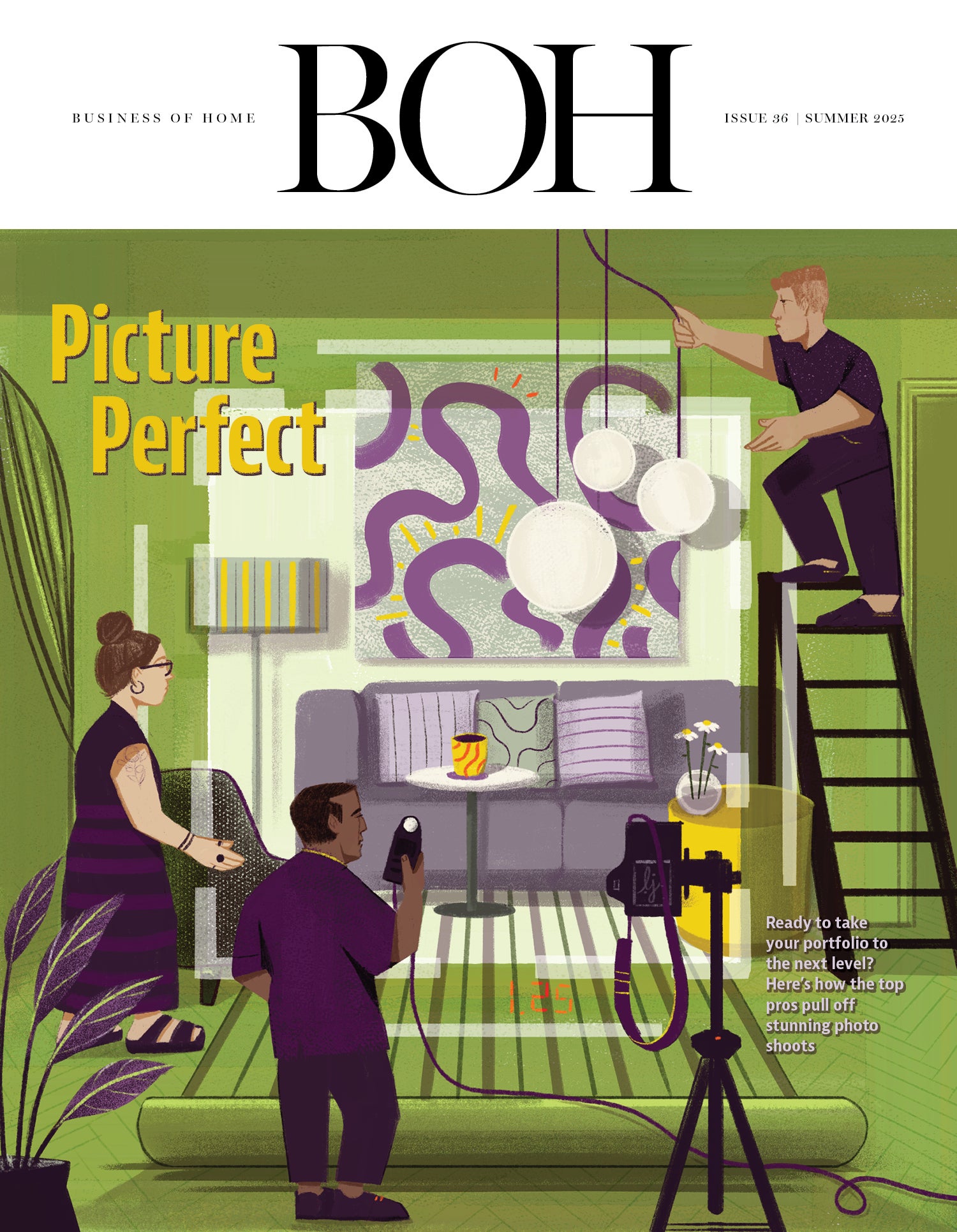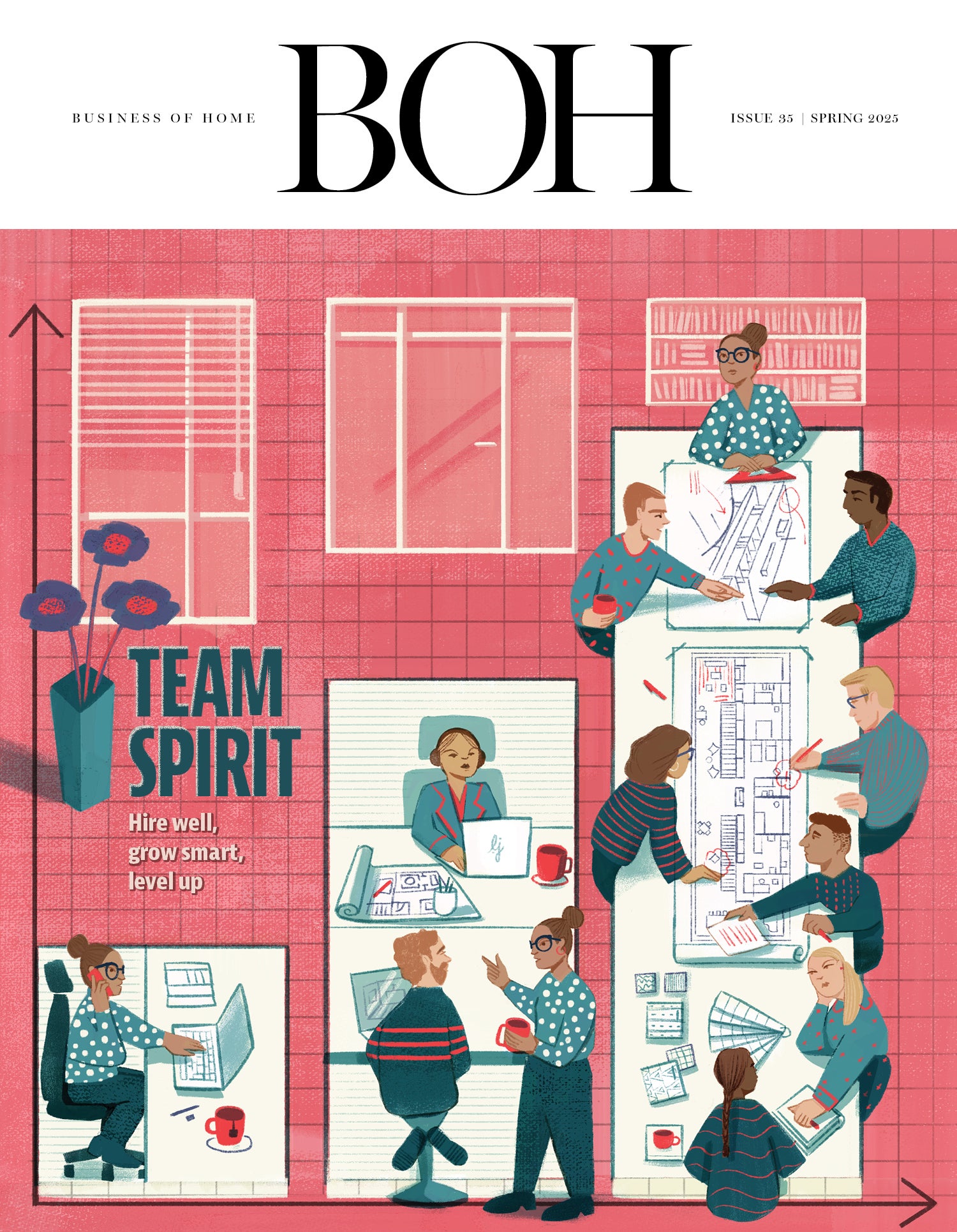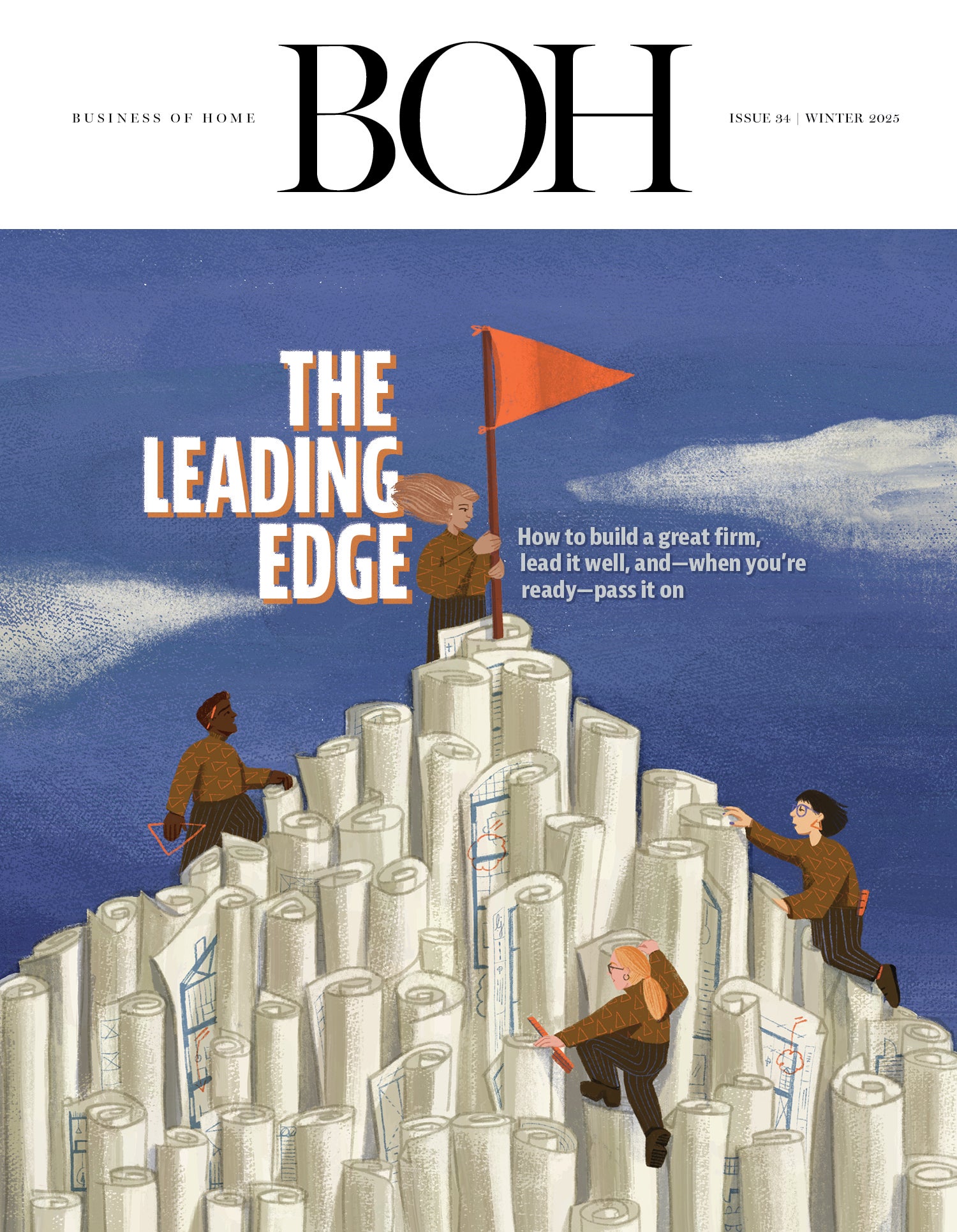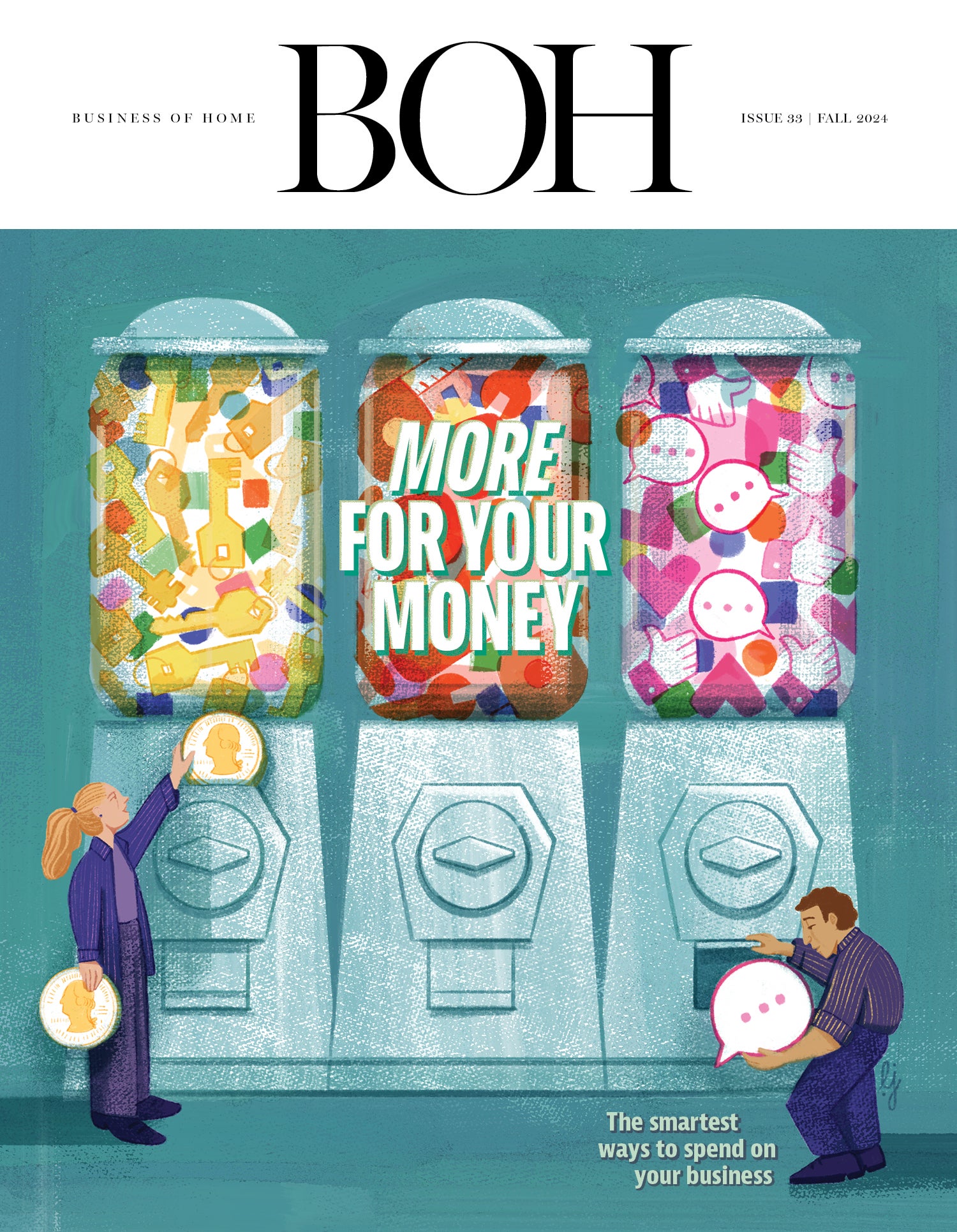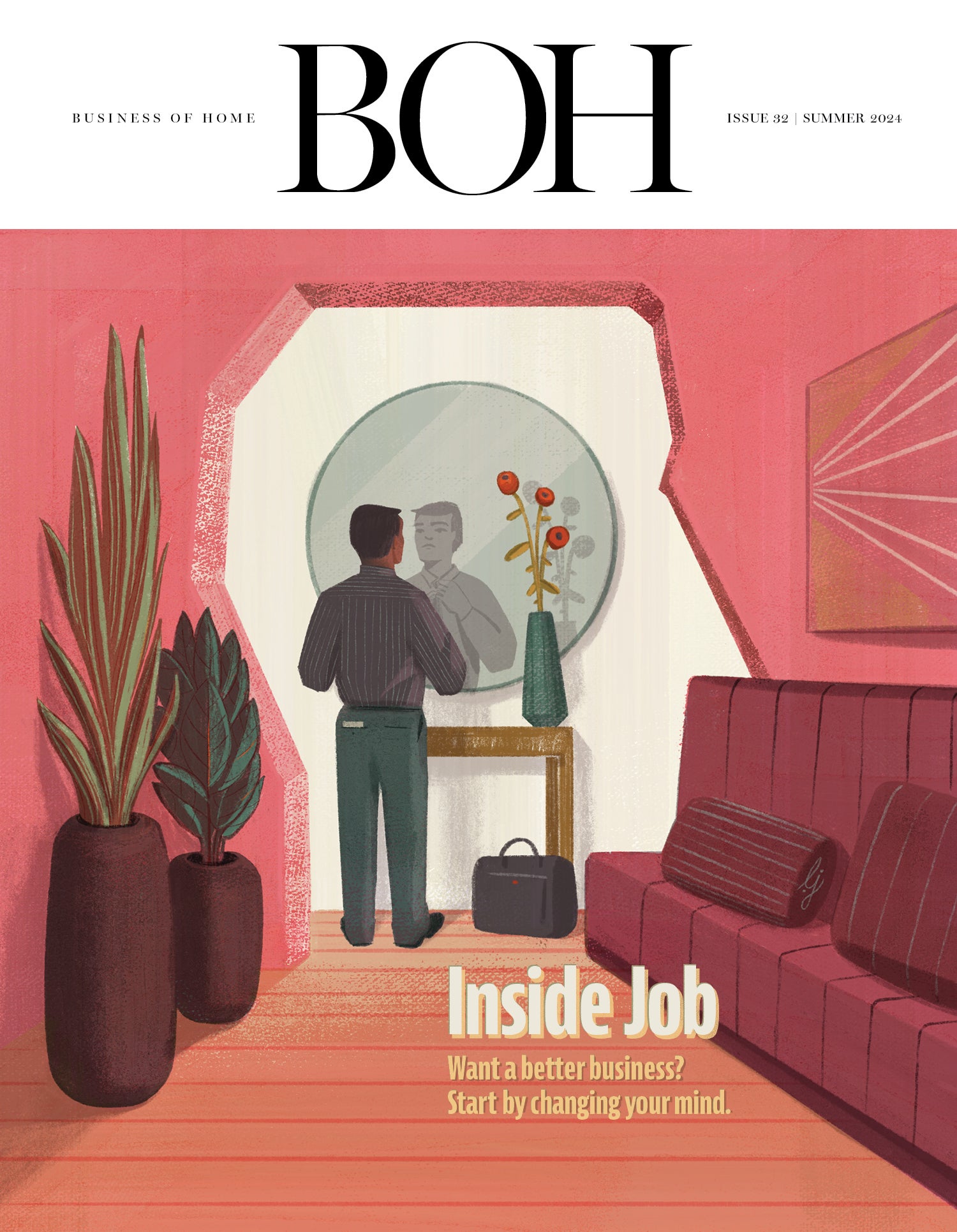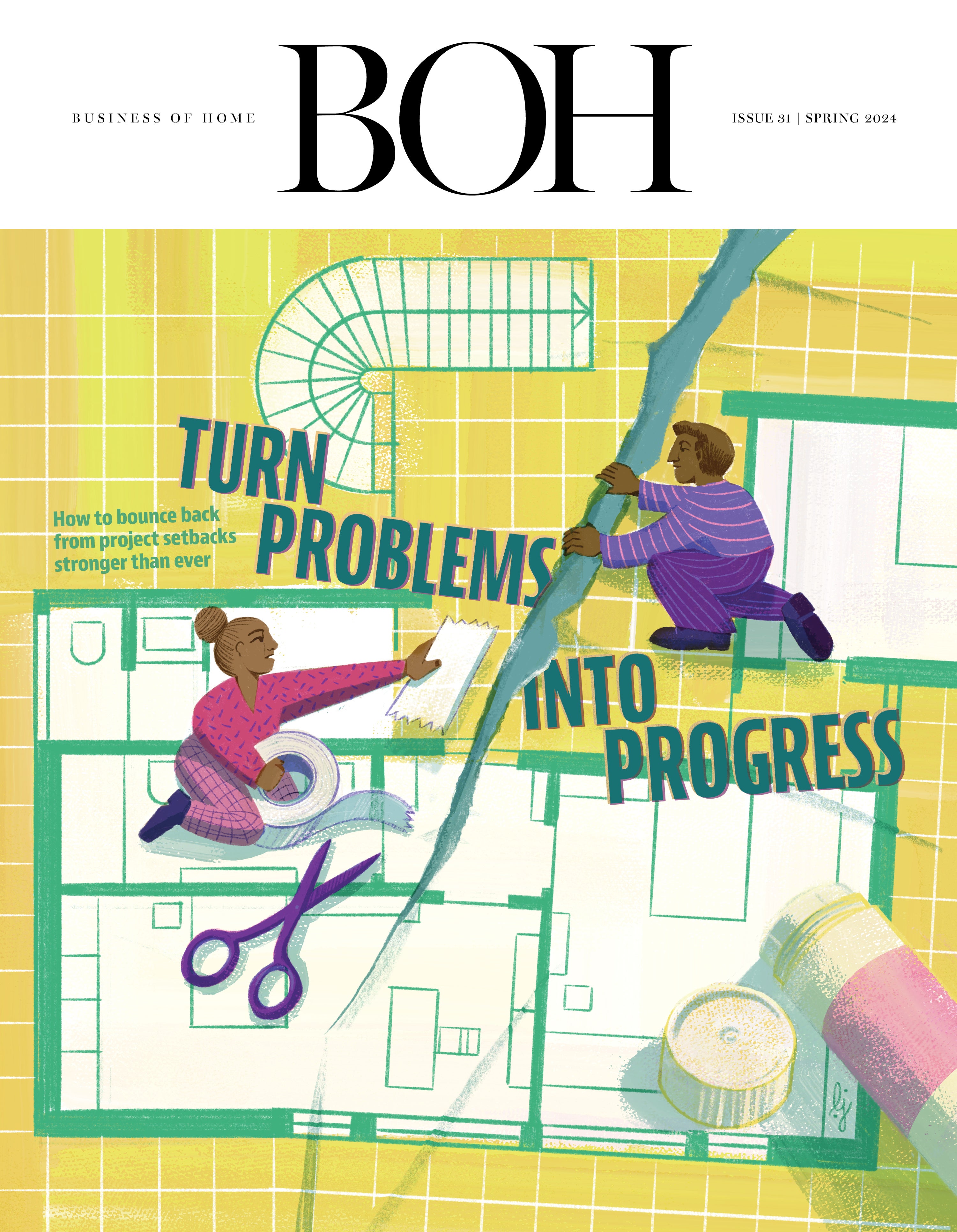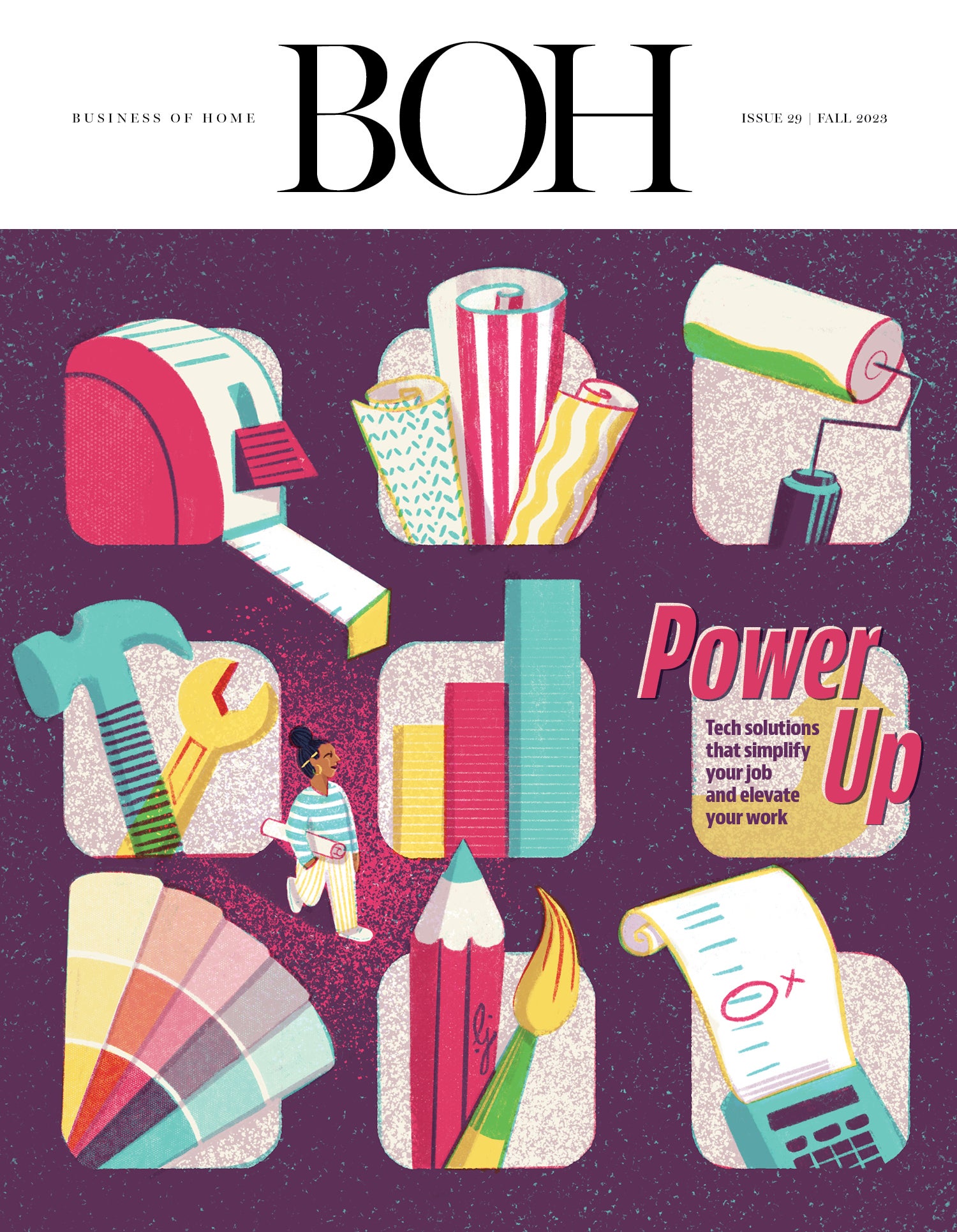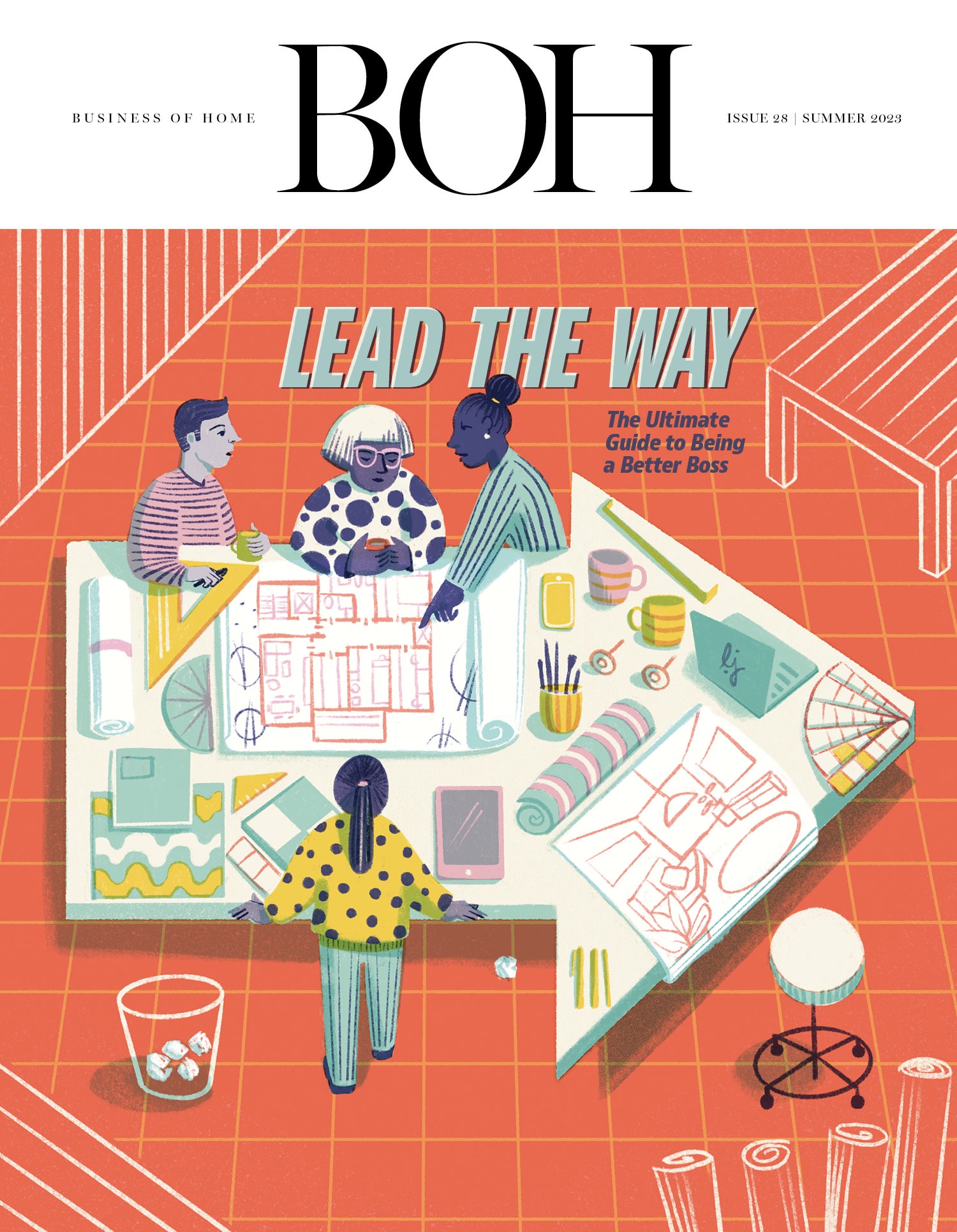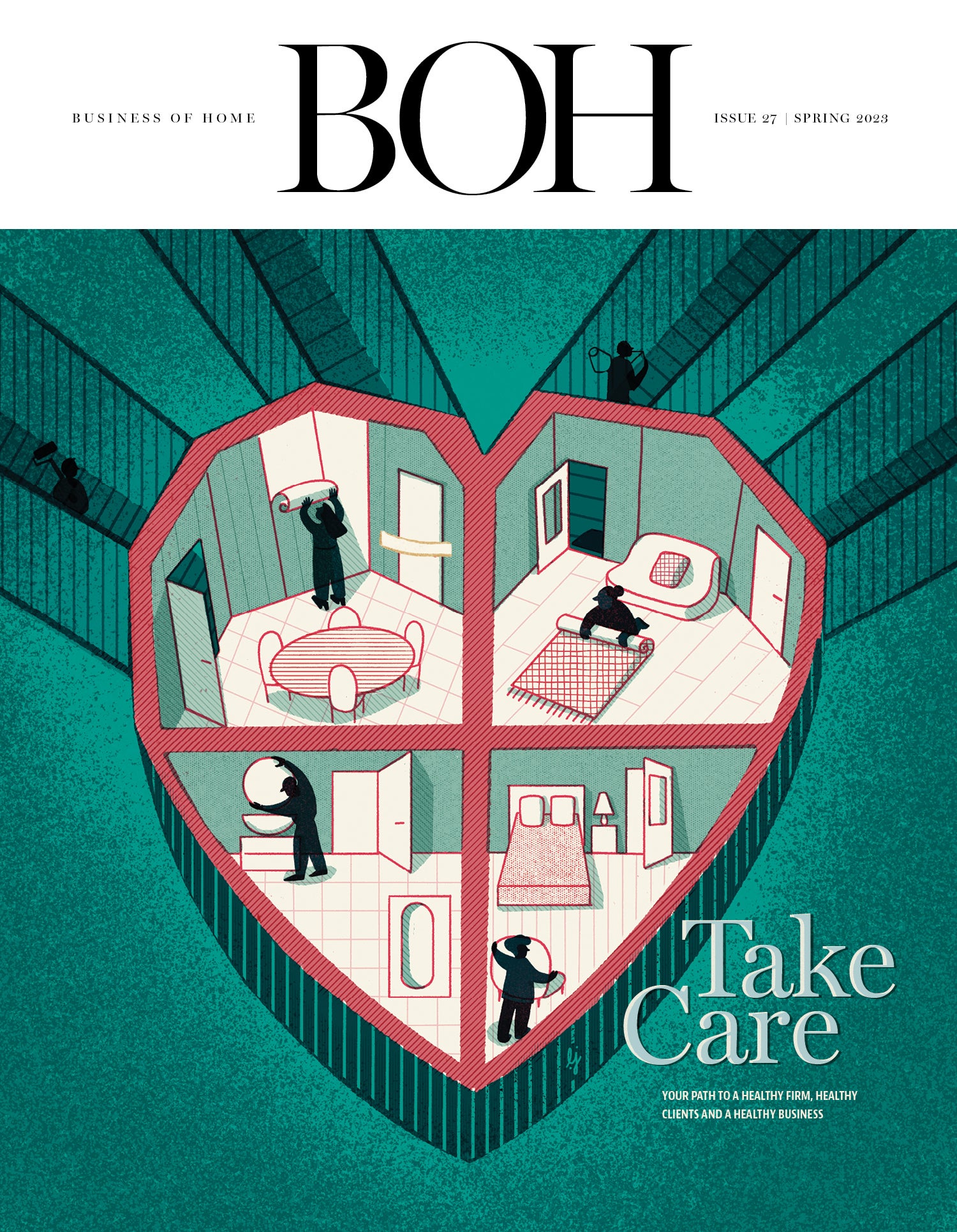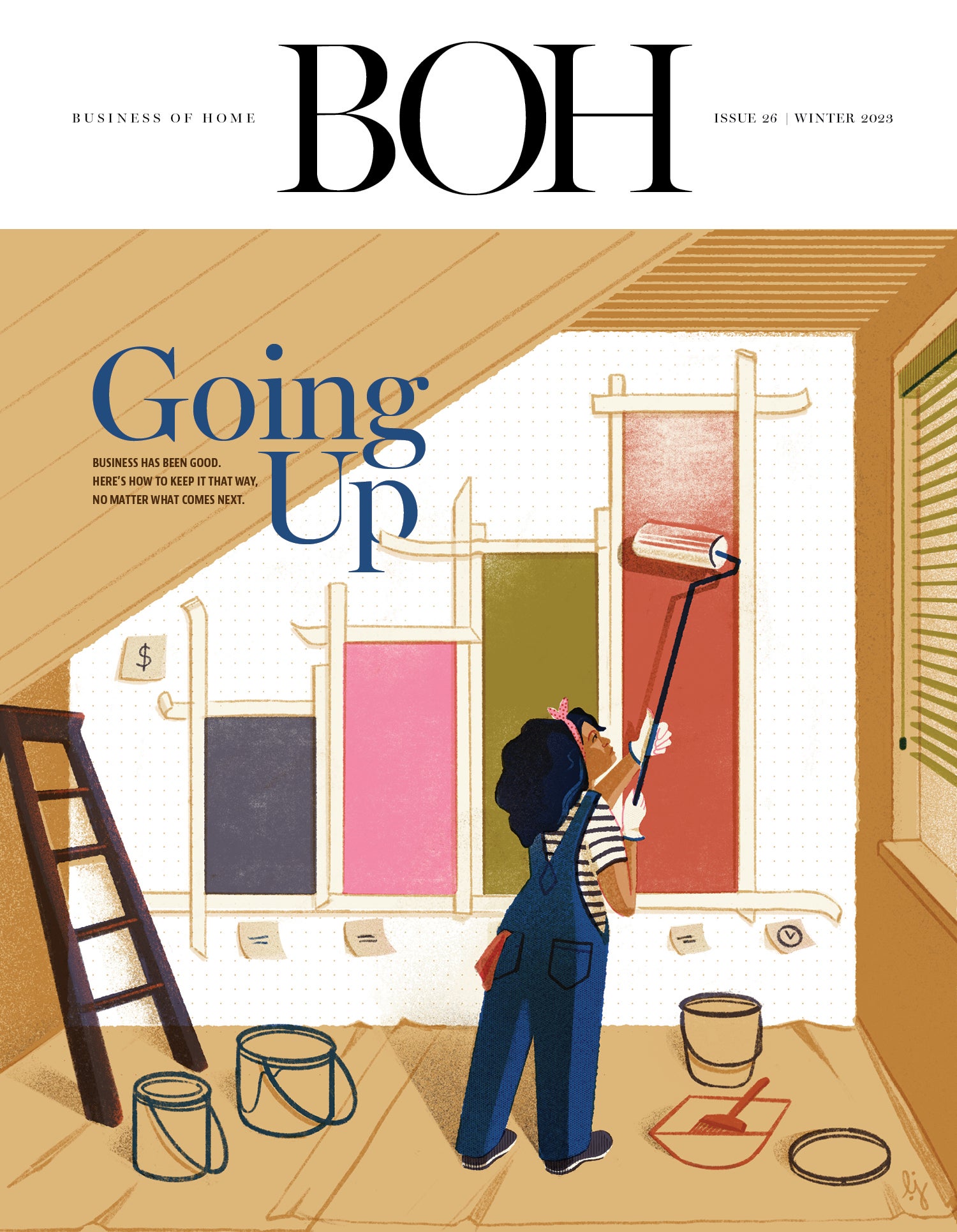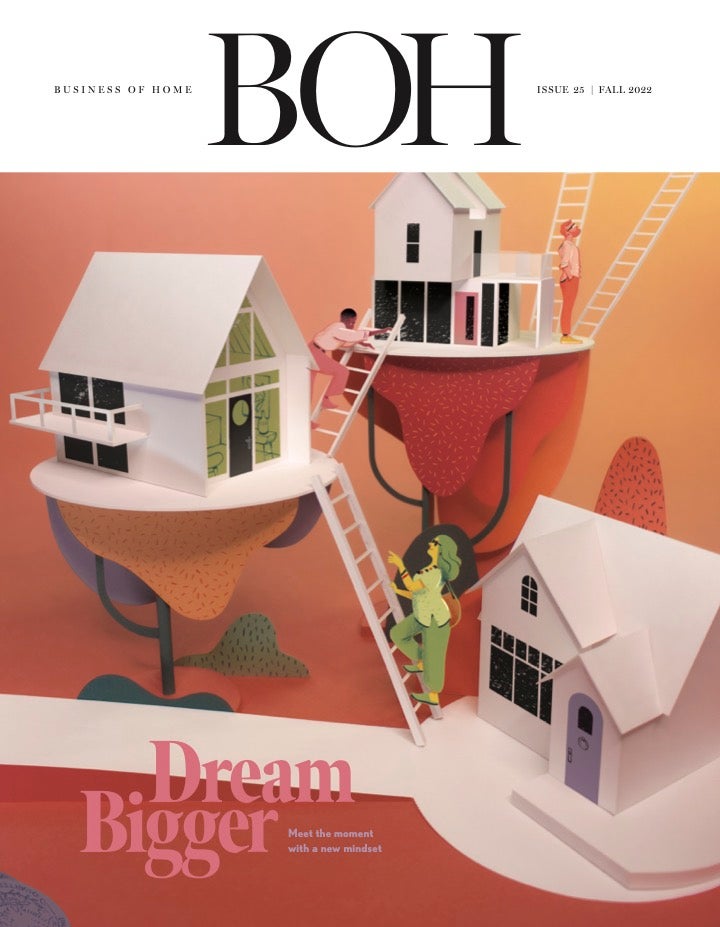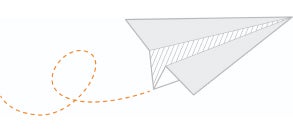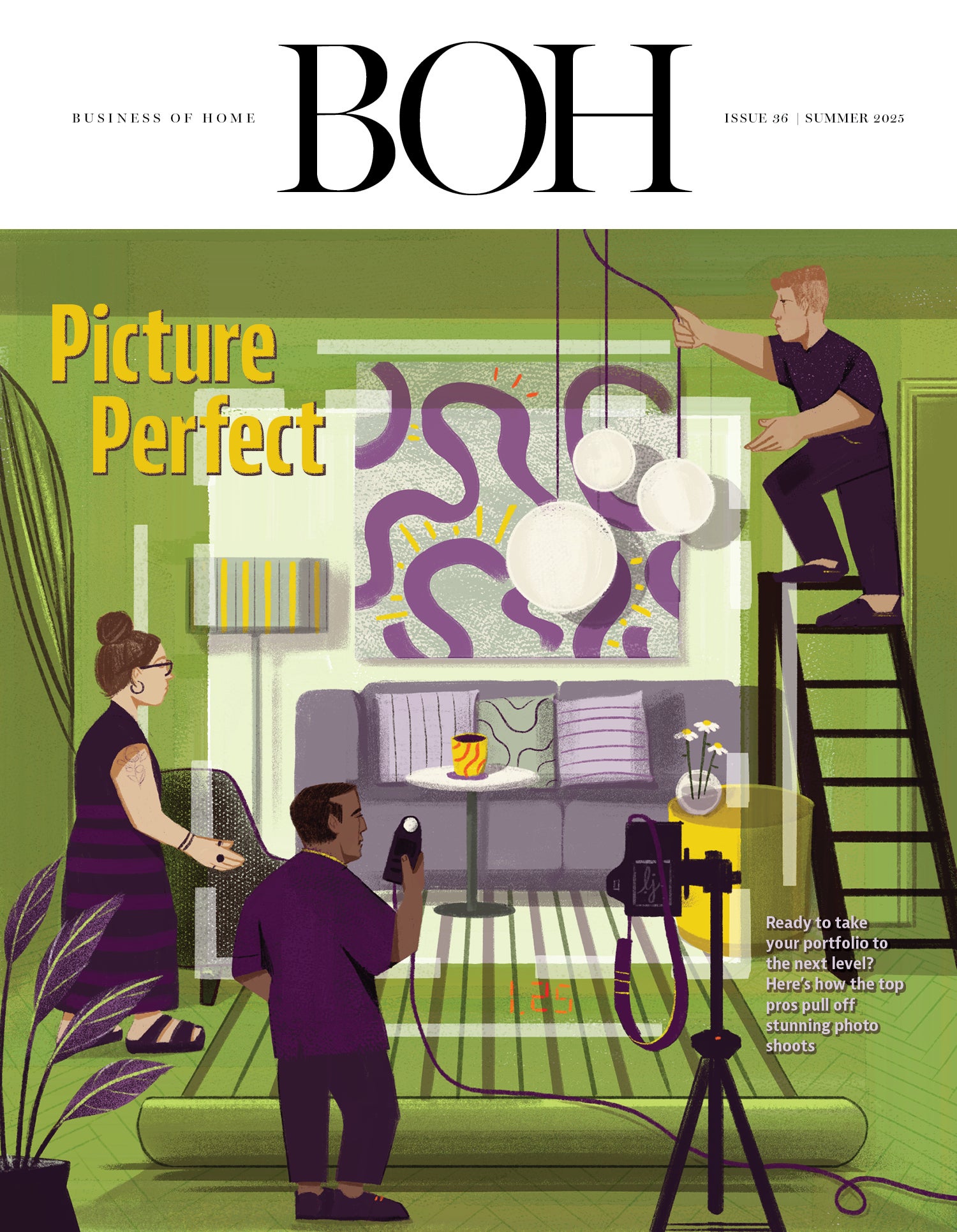Dear Sean,
I’m a new designer in Los Angeles working on establishing my fees. I find your advice on markup pricing compelling, but I would love some clarification: Are you saying that the fee formula for the procurement phase of a project should be a percentage converted to a monthly fee, estimated based on initial delivery quotes and extended to cover delays? And if so, are the only additional hourly fees during the procurement phase charged for project management that may coincidentally be happening at the same time?
Puzzled by Pricing
Dear Puzzled by Pricing,
It has been more than three years since I wrote that particular column, so a revisit is most certainly in order.
First, an analogy. If you go to a fancy restaurant with your significant other, and each of you order your favorite entree for say $50 and have a cocktail with it (say $15), the bill will be $130, and the restaurant’s goal gross profit will be about $39 or roughly 30 percent. If that is where your analysis ended, you might say that the same goes for a designer making roughly the same percentage, and the goal would be to increase that percentage as much as possible. But that is a fool’s errand if ever there was one.
Even though your client only cares about what is spent in the end, you and your design business definitely care about where the money is going throughout the process
Back to the restaurant analogy: To deliver your favorite entree to you, the restaurant has to buy, store and prepare the ingredients, and then serve and clear it. That’s not to mention all of the front-of-house activity that gets you to your table in the first place and manages your experience. Needless to say, all told, it is a lot of work to bring your entree to you. So a very healthy margin on your $50 entree alone would be 15 percent, or $15 on a $100 bill.
With all due respect to the mixologists out there, serving alcohol in just about any form is not nearly as time-consuming, and the margins on the product are far better. Most restaurants hope to make about 80 percent on alcohol, or $24 on $30 worth of cocktails served.
In other words, two-thirds of the restaurant’s profit comes from the sale of alcohol, even though it is less than 25 percent of revenue. The food, however, remains critical. If it is terrible, no one will come to drink the alcohol.
Why does this analogy matter? Think of design and retail sales for your business as the bar, and production as the entree. There has been a long-term industry tendency to focus on how to maximize the revenue associated with production through markups and/or hourly fees. A far more direct, clear and simple approach is to instead create financial stability through consistent cash flow designed to minimize a designer’s risk.
If you are seeking to make more money, focus on design and possibly retail sales for your projects, but let production be what it is: a rational, calculated number intended to properly compensate your firm to do the work to manifest your design. No more, no less. Just like a fancy restaurant cannot cut corners with the quality of ingredients or the integrity of food preparation, the same goes for the production of your design. You have to produce it the way you and your firm have to produce it, without regard to what another firm would need to manifest its own design.
I have written quite often about why I am not a fan of hourly billing for designers—everything from the constant risk of undercharging to the tendency to improperly calculate those hours. But for today I want to focus on one problematic aspect of hourly billing: By definition, it means you are behind the cash. Even if you have a retainer, you are only able to keep it once you have done the work. That means your order of operations is work first, money second—the total opposite of what your process should be when it comes to production (and where the restaurant analogy diverges since they are almost always behind the cash). Your goal as a financially-savvy, risk-averse designer should always be to get ahead of the cash: Money first, work second.
So here is an alternative to markups, a proposal that builds on my 2022 column. Calculate the percentage of your firm’s resources needed to complete production. If construction and project management are happening simultaneously, that number is likely less than when you are exclusively doing procurement. For today, let’s keep them separate. Say project management will require 10 percent of your firm’s resources and procurement will take 30 percent. Project management will last 12 months and procurement 8 months. Now the only number you need is expected revenue for your firm (fees only). Let’s say that for you to make what you would like to make, given your current overhead, you would need to generate $1.2 million or $100,000 per month. This means you would charge your client $10,000/month for the first 4 months of production, and then $40,000/month for the final 8 months, for a total of $360,000.
I will not do the math here, but in almost all cases, given production happens in 12 months, the $360,000 will be between 15 and 20 percent less expensive than if you were to use your hourly-plus markup model. Why? Because of the reduced risk of getting paid in advance and not being absolutely subject to the pain of delays. Yes, I know having a client accept that it will cost $360,000 to undertake and complete production is a challenge. Then again, these same folks have no problem paying $50 for their favorite entree. It takes what it takes to do what you do. And even though this revenue number is the largest, it exists because it has to exist—not because there is significant profit there.
When you remove the illusion (delusion?) of a percentage on sales and hourly rates as the driver of profitability for your firm, you can turn the focus to creatively-driven areas (design and possibly retail) and let production be what it is, so you can do what you do as only you can. Good luck.
____________
Sean Low is the go-to business coach for interior designers. His clients have included Nate Berkus, Sawyer Berson, Vicente Wolf, Barry Dixon, Kevin Isbell and McGrath II. Low earned his law degree from the University of Pennsylvania, and as founder-president of The Business of Being Creative, he has long consulted for design businesses. In his Business Advice column for BOH, he answers designers’ most pressing questions. Have a dilemma? Send us an email—and don’t worry, we can keep your details anonymous.



